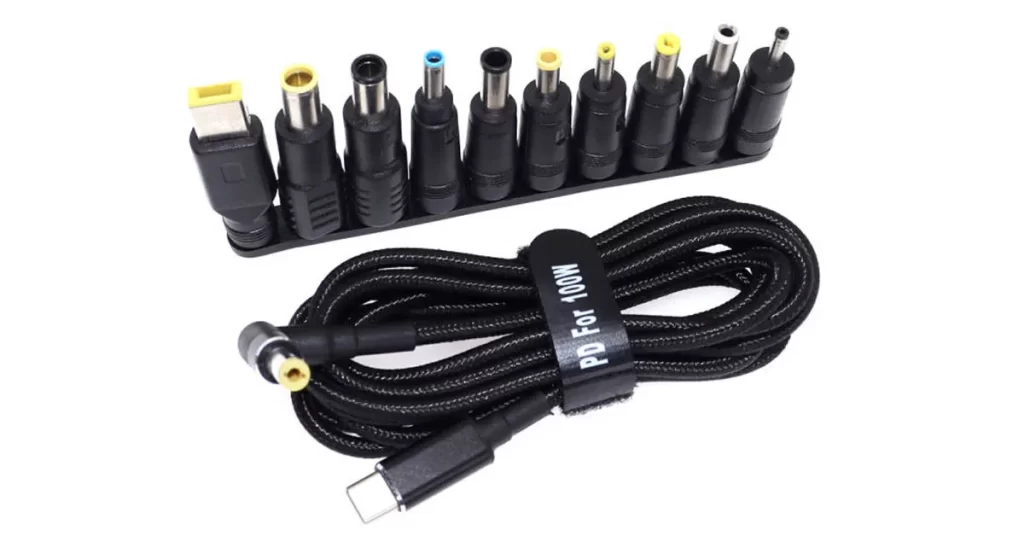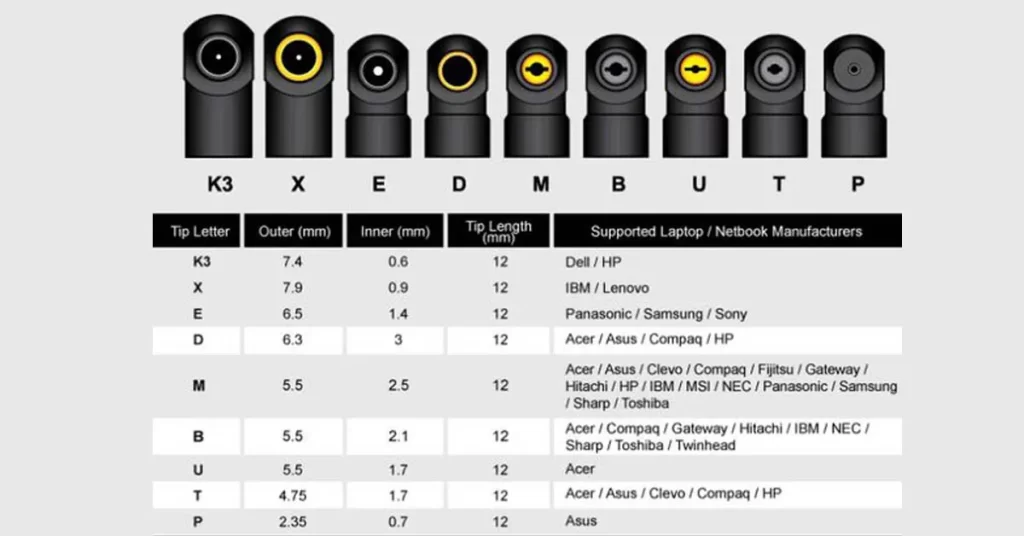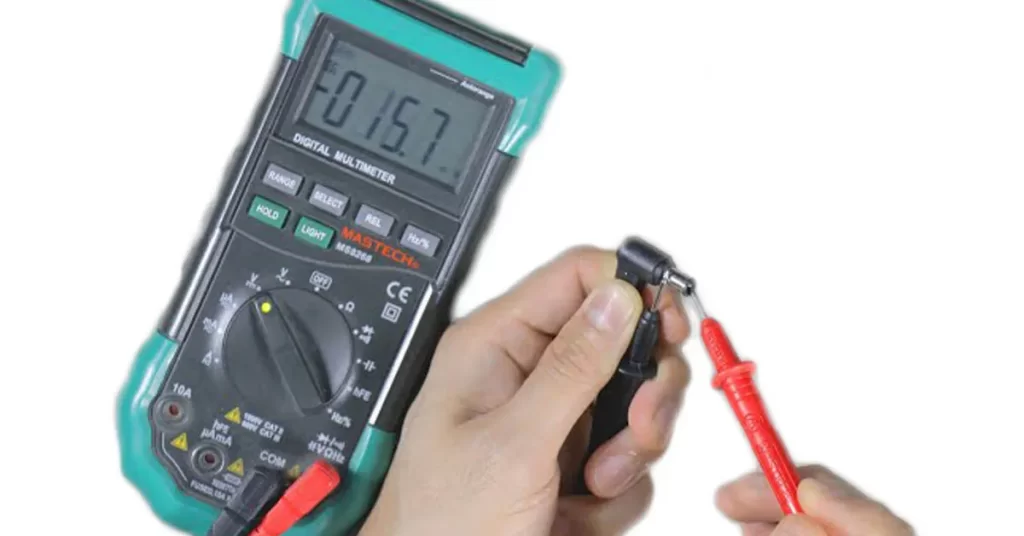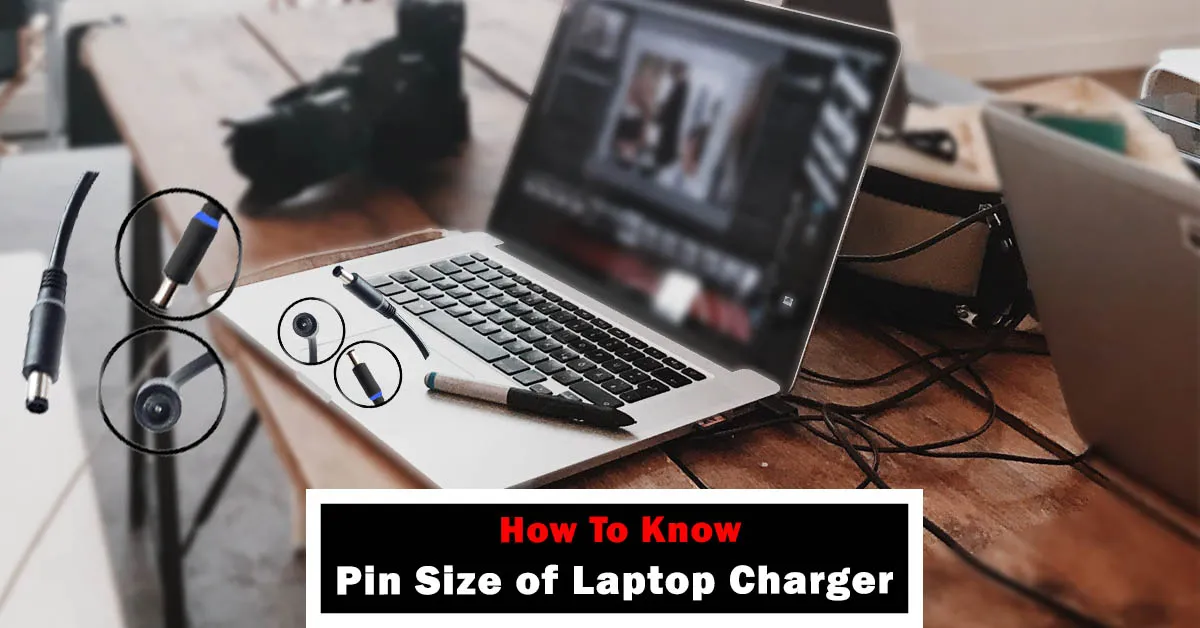Do you want to know the laptop charger pin sizes for your laptop? Some problems happened with your old adapter, and you want a laptop charger replacement. These things happen!
Our main concern is how to know the pin size of a laptop charger. Laptop chargers are mandatory for the portable system, so it works smoothly. But more importantly, the charger’s pin size must be accurate while replacing an adapter.
The term “pin size” in the context of laptop chargers refers to the diameter of the connector that plugs into your laptop. It’s a crucial specification to ensure a secure and efficient power connection. When the pin size aligns perfectly with your laptop’s requirements, it promotes reliable charging and minimizes the risk of any issues.
In this guide, we will embark on a journey to unveil the methods that empower you to effortlessly ascertain the pin size of your laptop charger, allowing you to make well-informed decisions regarding charger compatibility and replacement.
Pin Size of Laptop Charger Compatibility
The pin size is fundamental in ensuring your laptop charger is compatible with your device. Using a charger with the wrong pin size can lead to issues such as a loose connection, inefficient charging, or even potential damage to your laptop’s charging port.
To avoid any mishap, it’s necessary to identify the pin size before making any charger-related decisions. Before moving toward the methods, some terminologies, i.e. barrel connector, pin size types, power connecter sizes, etc., are essential for an exact match. Let’s discuss each terminology first:
Laptop Charger Pin Types
Laptop charger pin types or connectors come in diverse shapes and sizes, each tailored to fit specific laptop models. Connectors have many characteristics, i.e. cylindrical and coaxial to the modern USB-C and Apple’s iconic MagSafe connectors. Each has its laptop charger connector; now, let’s discuss each briefly for better understanding.

Type 1: Cylindrical Pins
Cylindrical pins are among the most common laptop charger pin types. They come in various sizes, with the most prevalent sizes being 4.0mm x 1.7mm and 5.5mm x 2.1mm. These pins have a cylindrical shape, and the inner and outer diameters determine their size.
Type 2: Rectangular Pins
Some laptops, particularly older models, use rectangular pins. These pins have a flat, rectangular shape, and their size is usually specified in millimeters.
Type 3: Coaxial Pins
Coaxial pins are also widespread and come in sizes like 3.5mm x 1.35mm and 4.8mm x 1.7mm. They have a center pin surrounded by a metal collar or sleeve, which helps secure the connection.
Type 4: USB-C Connectors
Modern laptops, especially ultrabooks, and some MacBooks use USB-C connectors for charging. USB-C is versatile and can handle both power and data transfer. It has a small, reversible design that’s becoming increasingly popular.
Type 5: MagSafe Connectors
Apple’s MagSafe connectors were used in older MacBook models. They had a unique magnetic attachment that allowed the charger to detach easily to prevent accidents.
Laptop Pin Size Types
As we mentioned earlier about different types of connectors. In the same way, the sizes of these connectors vary. Here, you’ll be going to find out which size is suitable for your laptop. Each adaptor has a different laptop charger hole with inner and outer diameters. These various pin sizes are very effective as laptop power connectors.

Type 1: Barrel Connector Size
A barrel connector is a cylindrical plug used in electronic devices to transmit power. It is characterized by its two key dimensions: the outer diameter (OD) and the inner diameter (ID).
Common barrel connector sizes include 5.5mm x 2.1mm, where 5.5mm represents the outer diameter, and 2.1mm signifies the inner diameter. This size is prevalent in many laptop chargers and other electronic accessories.
The OD determines the size of the connector’s outer ring, while the ID corresponds to the central pin’s size. The compatibility of a barrel connector relies on matching these dimensions precisely with the device’s power input.
Type 2: Barrel Plug Size
A barrel plug is the counterpart to the barrel connector and is designed to fit into it. It also features outer and inner dimensions, mirroring those of the connector.
For instance, a common barrel plug size is 5.5mm x 2.1mm, while you can also find 6mm x 3mm similar to the corresponding connector size. The snug fit between the plug and the connector is essential for efficient power transmission.
Type 3: DC Power Plug Sizes
DC power plugs encompass a range of sizes and types used for Direct Current (DC) power connections. These plugs vary not only in their dimensions but also in their shapes, making compatibility assessment critical.
Some common DC power plug sizes include 3.5mm x 1.35mm, 4.0mm x 1.7mm, and 5.5mm x 2.5mm. The choice of DC power plug size depends on the specific requirements of the different laptop charger ports.
Type 4: DC Power Connector Size
Much like the barrel connector, the DC power connector is a cylindrical plug used in laptops for DC power transmission. Moreover, these connectors can also be used in various devices, including CCTV cameras, routers, and LED lighting, and accurate sizing is essential to ensure a secure and reliable power connection.
Type 5: AC Adapter Tip Sizes
AC adapter tip sizes refer to the dimensions of the connector or tip of an Alternating Current (AC) adapter that plugs into a laptop. These tips can vary widely in size and shape, and support voltage of 100-240V. Different dimensions are pivotal in selecting compatible laptops and ensuring uninterrupted power transmission.
Testing Laptop Charger
Once you finalize the adaptor or connector, match all the laptop charger specs with the old charger i.e. pin sizes, types, voltage, wattage, etc., then test the laptop charger. After matching the specs, insert the connector into the hole of the laptop.

Make sure it works well i.e. there is no charging failure and overheating. If the charger causing any issues unplug it immediately, so the laptop remains safe. Moreover, make sure the connector fits in the hole, as loose connectors cause problems in the future due to fluctuations in the power supply.
Testing these few things in the laptop charger saves your laptop from any bad circumstances. Furthermore, avoid selecting any outdated and malfunctioning charger. If you are inexperienced then visit to professional technician for the selection.
Frequently Asked Questions
How to Test Laptop Charger?
When plugged in, notice the indicator light, and observe the laptop battery icon. Moreover, notice the charger’s voltage output for confirmation of the right voltage would be around 19V DC.
Can I use a Higher-Wattage Charger for My Laptop?
No, using a charger with significantly higher wattage is not recommended at all. If your laptop needs a 65W range charger, then you can increase up to 80-85W charger. While increasing wattage can definitely harm your laptop.
Can I use a Lower-Voltage Charger for My Laptop?
Yes, but not advisable. It drains the battery’s health over time. Moreover, each laptop operates within specific voltage ranges, that are mentioned over it. Using lower voltage can lead to lower charging and reduced performance.
How to Check Laptop Voltage?
Read the user manual or label pasted near the laptop’s power input port. This label typically displays the voltage specification in volts (V) under “Input”. Match laptop and charger voltage, and then use that charger.
How to identify an HP Laptop Charger?
HP chargers typically have a cylindrical connector with specific dimensions like 4.5mm x 3.0mm or 7.4mm x 5.0mm. Furthermore, HP laptop chargers usually have a label with key information.
Bringing It Together
Finding the pin size of your laptop charger doesn’t have to be a daunting task. Begin by examining the label on your current charger, which often displays vital information, including the pin size in millimeters. If that information isn’t readily available, refer to your laptop’s user manual or the manufacturer’s website, where detailed specifications, including the pin size, are usually provided.
Alternatively, for hands-on verification, use a caliper or ruler to measure both the outer and inner diameters of the connector accurately. Armed with this knowledge, you can confidently select a replacement charger that precisely matches your laptop’s requirements, ensuring seamless power delivery.
This is how to know the oin size of a laptop charger in a simple way. Laptop charger tip for various companies i.e. HP, Dell, Sony, Lenovo, etc. varies. Select only a branded charger, as a local charger can cause problems with the battery and laptop itself.
Last modified: October 9, 2023


